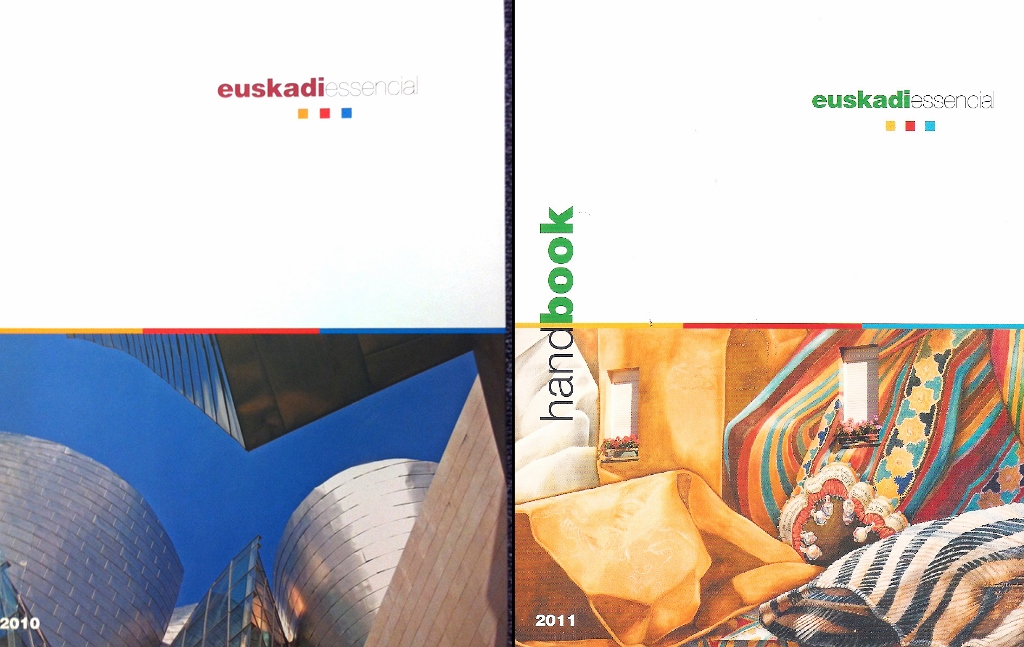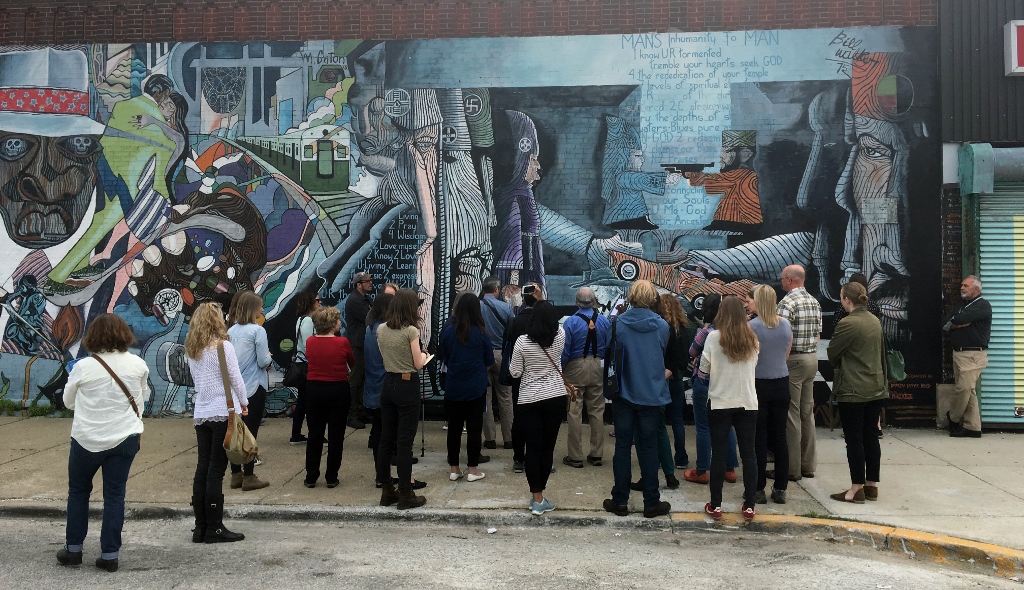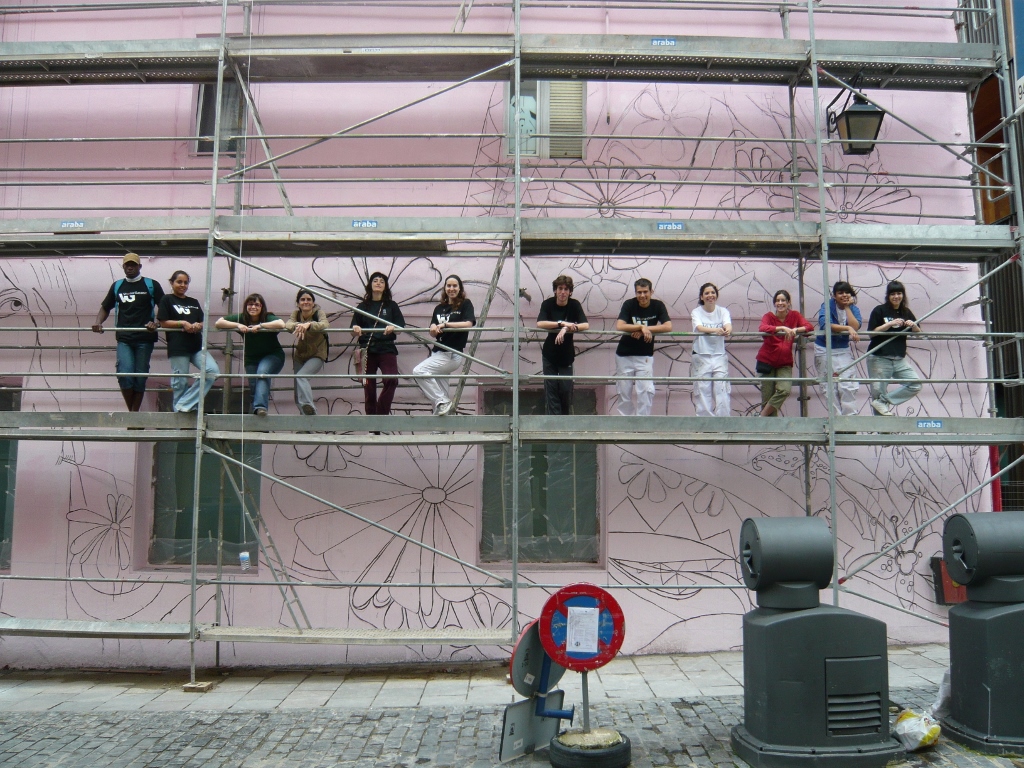This week’s contributing writer, Veronica Werckmeister, is an artist living in Vitoria-Gasteiz, Spain. She is the co-founder and director of Itinerario Muralistico de Vitoria-Gasteiz (est. 2007). Her artistic practice is characterized by community involvement and socio-political engagement, usually in the form of public murals.
I once called community art “the ugly duckling of the street art movement”. Not flashy, not star studded, not branded and certainly not t-shirt worthy… It emerges, sometimes spontaneously, sometimes engendered, sometimes successful, and sometimes not, and it´s been around for a long, long time. For me it is an example of cultural accessibility, of democratic, open, and honest social artistic practice.
I have spent the last 16 years promoting this idea and speaking out in favor of public art as a participatory process. In addition I have painted and led dozens of community based mural projects, mostly in Spain. I believe that our contemporary culture is capable of producing high-quality works of art that are a result of the collaboration between professional and non- professional artists and that speak to themes that are meaningful to the communities where the projects are realized: site and socially specific. Participating in culture not only as consumers but also as makers intensifies our sense of citizenship, our empathy, and our social awareness. Additionally, community art that lasts can create a chain of communication between the past, present, and future. It strengthens our neighborhoods, gives us a sense of history and meaning, and emboldens communities and individuals to participate actively in all realms of our society.
When embarking on a community art project, questions of quality, permanence, and social involvement immediately come into play. Not only must the surface preparation and the materials be of the highest quality, but the expectation placed on non-artist participants and artist facilitators should be high. It is a great responsibility to intervene in the public space and there is no reason that artistic practice that stems from collaboration and participation with “non-artists” shouldn´t be held to the highest standards. It is a balancing act and a challenge that, if successful, will contribute to increasing the value assigned to community art as a whole. In Vitoria-Gasteiz, Spain, we are accomplishing this feat, slowly and methodically, producing 16 large scale projects in the last 10 years. The resulting community murals have been recognized in numerous publications and forums often times being mistaken for works by individual artists. Not so much the ugly duckling anymore…

“Euskadi Essencial”, Tourist guidebook for 5 star hotels.
2010 cover: Frank Gehry´s Guggenheim
2011 cover: A community mural directed by Veronica Werckmeister and painted by 13 non-artist community volunteers in Vitoria-Gasteiz.
In 2012 I attended a conference in Valencia, Spain called “Conservation Issues in Modern and Contemporary Murals” and I was shocked to learn that there were so many people trained, interested and indeed even concerned with the conservation and value of public murals. It has always seemed to me that there was so little value placed on community art from academia, the art world, etc. Had the relatively new “street art” movement drawn attention to other public interventions like community art? Is it too late for some, already decaying works? Could this new attention and desire to conserve also mean that production of new community based art would be more supported? Could the ugly duckling be transforming before my very eyes?
Today, a few weeks after attending the “Approaches to Conserving Contemporary Murals” workshop at the annual AIC conference in Chicago, I can say that the tide is shifting. It seems there is, in fact, a great interest in the conservation of community art by professionals from all over the world, and more importantly, a keen interest in the technical and conceptual challenges posed by the inevitable decay of community art.
In Chicago we were led on a mural tour and saw several restored murals. The strategies for each restoration project were based on numerous factors and it was clear that no decision was made lightly. Some controversy ensued. Should one repaint? Engage the community in the restoration process? make additions? eliminate unsalvageable areas? What were the experiences in Los Angeles? in Philadelphia? in Rio de Janeiro? For someone like me who works in a field that is often misunderstood and underappreciated, I am more than elated that these questions are even being posed.

Participants in the workshop in Chicago at the restored mural: “The Wall of Daydreaming and Man´s Inhumanity to man”, Photo credit: V. Werckmeister
My hope is that this interest in community art restoration and conservation comes paired with a reevaluation of community art as a whole; that a true assessment of the importance of community based art leads to investment, recognition, and study of public art so that the mural movements started decades ago, or new ones springing up in this century, receive an impulse to grow and evolve. It might soon be time to see the duckling for the swan that it is, a necessary and beautiful part of our visual culture.
VoCA is pleased to present this blog post in conjunction with “Approaches to the Conservation of Contemporary Murals”, a two-day workshop that was held during the 2017 AIC Conference in Chicago. The program focused on visits to outdoor community murals in Chicago from the past half-century, in various states of preservation. Presentations and discussions by artists, community members, and conservators regarding various approaches to conservation, treatment, repainting, or renewal of these public murals were a key component. For more information, click HERE.


[…] in their seats. Muralist Verónica Werckmeister (whose blog post for this series can be seen HERE) confided in me recently that at the same Valencia conference she felt that she had fallen from […]
[…] unas semanas después de asistir al taller “Approaches to Conserving Contemporary Murals” en el marco del congreso anual del American Institute for Conservation of Historic and Artistic […]